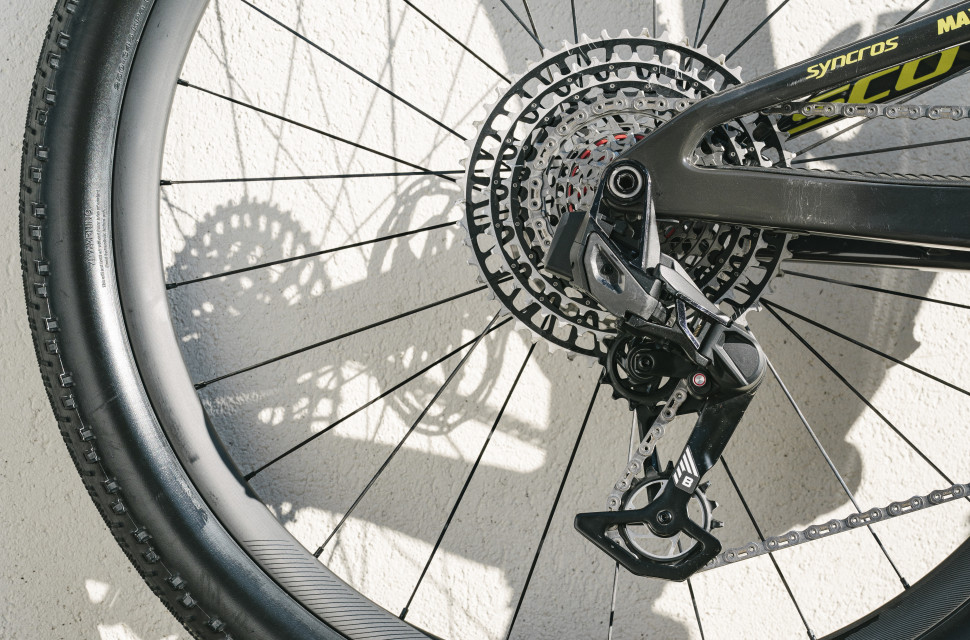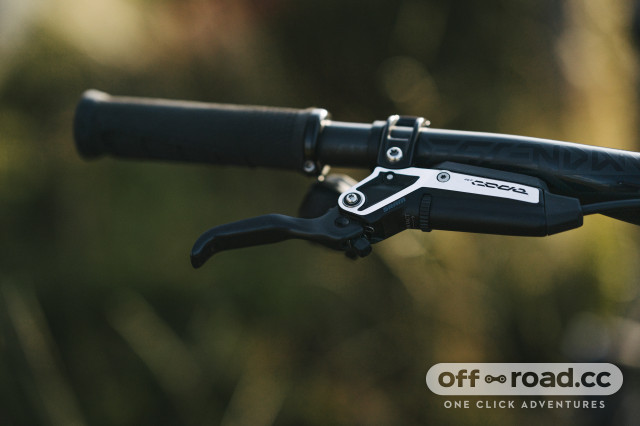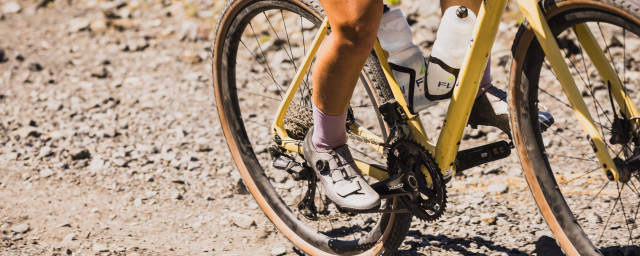SRAM unveils next generation direct mount 1x drivetrains and brakes

SRAM's innovative Eagle drivetrains have been around for 11 years now and have pioneered the 1x concept. Now, the brand has pushed its shifting kit even further, launching three brand new drivetrains each utilising a direct mount derailleur - some of which we've already got a sneak peek of earlier. And that's not all as the SRAM has also introduced its all-new Code and Level Stealth brakes.
- Best mountain bike handlebars you can buy - tried and tested trail bars
- How to buy the best mountain bike for your child - whatever their age
- Best titanium gravel and adventure bikes you can buy
SRAM direct mount derailleurs
Starting off with the range of derailleurs, there are three available, the XX SL, XX, and X0 - the first of which brings lightweight and strength to the party. More importantly, SRAM says it changes the relationship between the cassette and derailleur as they're both designed as integrated and interdependent components.
Differing from any other derailleur design, the new SRAM derailleurs mount around the rear thru-axle using a hangerless interface. This is said to create a stronger connection as it grips both sides of the frame. It comes with an overload clutch and the profile of the mech is more tucked into the frame. Interestingly, the brand calls the lower pulley, 'Magic Wheel' - the result of which keeps the pulley spinning, even if something were to get stuck.
The XX SL mech comes complete with a carbon cage, a replaceable outer link, and a b-knuckle cover.
Next up is the XX derailleur which gets a lot of the cool tech on its lighter-weight XX SL range mate but comes as a burlier option. With that in mind, it ditches the carbon cage but it comes with replaceable skid plates. The X0 mech is built with durability at the forefront of its design and it can be upgraded to fit the skid plates found on the XX.
SRAM POD controller
Moving on and SRAM has made some significant changes to the AXS controller, calling its latest interaction the POD Controller. The brand says that it's lighter than previous AXS controllers and its ergonomics have been updated to offer loads of adjustability. It uses a 'click and fire' two-button design. Each button can then be customised to best suit the rider. This remote is available in two versions, with the fancier Deluxe model offering interchangeable convex or concave buttons.
New SRAM cranksets and cassettes
Of course, the new drivetrains come with new cranksets with the XX SL Eagle model featuring a hollow core carbon construction, making it the lightest ISO-certified crank on the market, says SRAM. The XX crankset also gets a carbon construction but it benefits from a foam core to boost strength and stiffness. It also comes with a removable bash guard. There's also an e-MTB-specific crankset assembly that benefits from the same features as the XX crank, but it's compatible with a Gap Cap for better integration with Bosch and Brose systems.
The X0 crank claims to be the most advanced alloy crank that SRAM has created to date. This one is available with a bash guard as an option and like the others, is power meter ready. There's also an e-MTB-specific version available.
Each of these cranksets is available with integrated power meters, supplied by Quarq.
No shifting page has been left unturned as there's a new range of cassettes to complement the line-up. The XX SL cassette boldly claims that its SRAM's lightest cassette yet, offering 10-52T but its low-end gear steps have been optimised for better-shifting performance. It also offers a 55mm chain line to reduce stress on the chain through less aggressive angles.
The XX and X0 cassettes up the weight incrementally but use what SRAM calls X-DOME, which is a construction that features a lighter aluminium first fear on the former and a lighter 12th gear on the latter. All cassettes come with a 'Setup Cog', which makes for easier setup.
Prices for each of the drivetrains are up there, with the X0 groupset starting at £1,715, the XX starting from £2,195, and XX SL from £2,355.
New SRAM Code and Level brake levers
Now, onto the brakes and we've seen pictures of these floating around the internet. Now, SRAM's mountain bike brakes will come with Stealth levers which bring the lever body and hose closer to the handlebar. Found on the new Code and Level brakes, the new lever bodies come with the very same tech that we've seen on existing models.
The top-end Ultimate Stealth brakes come with both SwingLink tech and Lever Pivot bearings to help reduce fatigue on lengthy descents. The Silver Stealth model then drops the Lever Pivot Bearing.
As for the cross-country going Level brakes, there are two and four-piston models on offer. Now the brakes get tool-free reach adjustments.
Prices for the Level brakes start at £200 for the Silver 2-Piston model and go up to £305 for the Level Ultimate 4-Piston. The Code Stealth starts at £285 and goes up to £320.


















4 comments
Not in this case, the frame has to be designed for the SRAM universal hanger, but if you use Shimano, you use the hanger in the frame.
It does seem a typical SRAM solution - make a design so expensive that any benefits of reliability or robustness are lost because you could just buy a few spare rear derailleurs for the same price.
It is not even unique to keep the chain engaged through the change, as Shimano supposedly have done this on their latest generation of Hyperglide+ - but their system reduces shift time rather than extending it.
Needs a back to back comparison.
I was thinking the exact same thing: iirc a good hanger is designed to fail before the derailleur does. I'd rather replace a bent hanger than purchase a new derailleur cage. I'm not too clear on all the benefits of this new setup, except that everything will probably be extremely proprietary to SRAM.
Does a Rear Deraulleur need to have a "stronger connection"? Isn't one of the functions of a hanger to act as a weak link, minimising the chances of damage to the RD and/or frame, in the event of an incident?
So does this mean brands have to maintain both a Shimano rear triangle AND a Sram rear triangle.